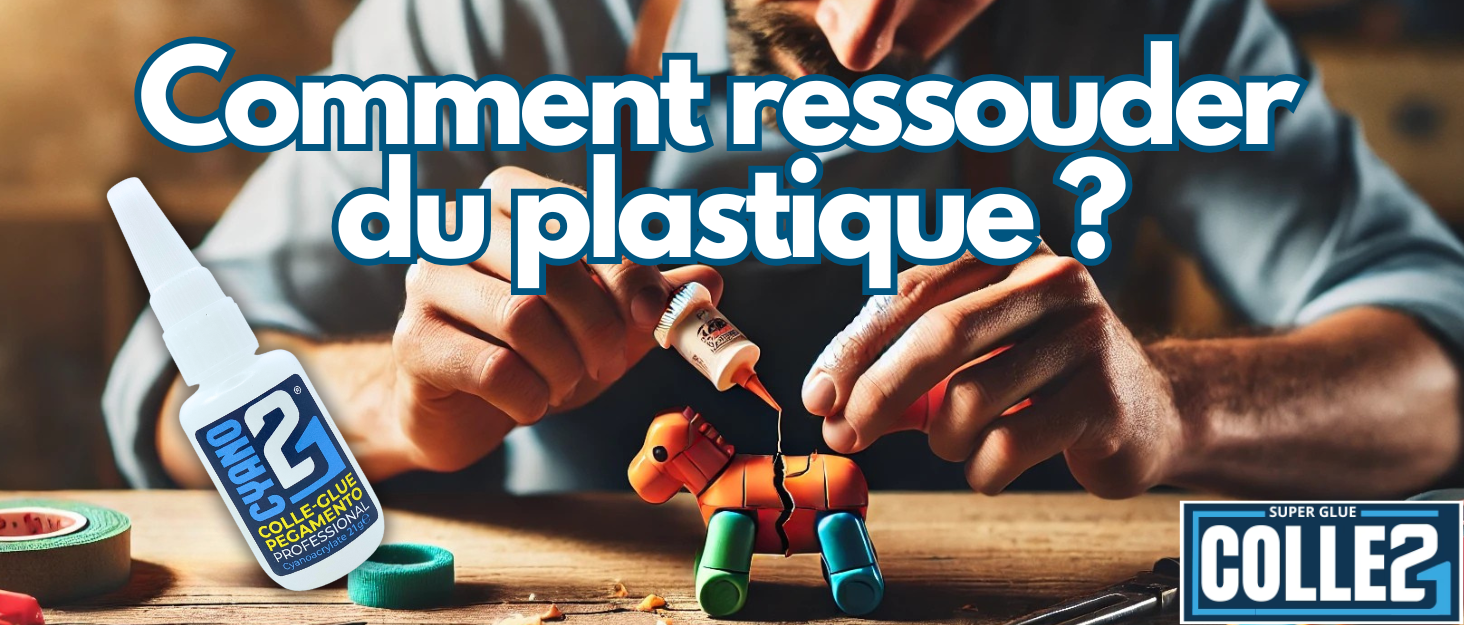How to change hard plastic?
Ropping hard plastic may seem complex, but with good products and techniques, it is a task that you can perform effectively, without compromising the quality or integrity of the material.
Here is a guide to help you choose the good hard plastic glue and use it correctly.

Why resource hard plastic?
Hard plastic objects are omnipresent in our daily lives: electronic boxes, toys, car parts, household appliances, etc. When they break, replace them can be expensive. Fortunately, Hard plastic to re -make:
-
Extend the lifespan of your objects
-
Reduce waste
-
Save money
-
Preserve objects that are difficult to replace
-
Reduce the carbon footprint linked to the manufacture of new objects
The importance of choosing the good glue for hard plastic
Choosing the right glue is crucial when working with hard plastic. Inappropriate products can not only fail to create a lasting link, but also damage plastic. It is therefore recommended to use glues specially formulated for this type of material, capable of penetrating hard surfaces and withdrawing pressure, heat and humidity.
A good choice of glue also guarantees that the repaired area will find a mechanical resistance close to the original, while maintaining a good aesthetic rendering.
The best glues to rely hard plastic
1. Extra think of glue21 : Ideal for model making and DIY for precision work requiring a fine and precise application, theExtra think of glue21 is perfect.
This product is designed to quickly penetrate small juins by capillarity, offering rapid and strong adhesion without leaving traces.
Advantages of the extra think
-
Quick penetration: Its fluid formula allows precise application in narrow areas.
-
Quick drying: It hardens in a few seconds, which allows you to quickly continue the work.
-
Precise application: Its fine tip ensures total control to avoid overflows.
-
Invisible after drying: Perfect for visible repairs on models or decorative objects.
2. Dense medium cement of glue21: for more robust collages
This product is perfect for wider surfaces or pieces with thick joints. Its higher viscosity and slower drying allow adjustments before final socket.
Advantages of Dense Cement medium
-
Extended working time: Ideal for repositioning the parts before hardening.
-
Large connection force: Creates a very solid and lasting connection.
-
Flexible application: The specific tip allows uniform distribution on larger surfaces.
-
Ideal for structural repairs: Suitable for utility objects and subject to mechanical constraints.
This product is designed to quickly penetrate small juins by capillarity, offering rapid and strong adhesion without leaving traces.
How to change plastic? Advantages ofExtra Thin Cement
- Rapid penetration : Its fluid formula allows precise application and rapid penetration in small joints.
- Drying : It hardens quickly, which allows you to continue working without long waiting times.
- Precise application : With its fine applicator, theExtra Thin Cement Allows total application control, avoiding overflows.

Steps to reduce hard plastic
1. Prepare the surfaces
Carefully clean the surfaces to stick with a cloth soaked in isopropyl alcohol to remove any fat or dirt. Cleaning is a crucial step that guarantees better adhesion of glue.
2. Apply the glue according to the type chosen
-
Extra Thin Cement: Apply a small quantity to one of the surfaces, assemble quickly.
-
Dense Cement medium: Apply a uniform layer to the two surfaces, position them, adjust if necessary.
3. Maintain and let dry
Keep the parts in place using pliers or a light vice. Leave to dry according to the manufacturer's instructions (usually 15-60 minutes for initial socket, 24 hours for full drying). Avoid manipulating the part during this time to guarantee an optimal connection.
Additional advice for successful repair
-
Work in a well -ventilated space
-
Wear gloves to avoid contact with glue
-
Test the parts adjustment before applying the glue
-
Do not overload the glue surface, a thin layer is enough
-
Avoid moisture and dust during drying
-
If possible, apply a slight sanding of the front bonding edges to improve adhesion
Current plastic welding applications
-
Broken toys
-
Modeling pieces
-
Electronic devices
-
Car accessories
-
Plastic furniture
-
Household appliances
-
Sports and garden equipment
FAQ: How to resource hard plastic?
1. Can we re-assess all types of plastic? No, certain plastics such as polypropylene (PP) or polyethylene (PE) are more difficult to stick and require specific glues or techniques such as thermal welding.
2. What is the difference between sticking and changing plastic? The welding often involves the partial fusion of the material (thermal or chemical), while the collage consists in using an adhesive to attach two parts.
3. What is the most resistant glue for hard plastic? The dense cement medium is excellent for thick collages, while the extra think is better suitable for small precision adjustments.
4. Can we paint on a resourceful surface? Yes, once the glue is completely dry and hardened, you can paint the surface with compatible paintings.
5. How long should you wait before using the repaired object? It is advisable to wait at least 24 hours for full drying and guarantee optimal solidity.
6. Where to buy the glue glues21? They are available on Amazon or via the official glue21 website.
Conclusion
With products specially designed asExtra Thin Cement and the Dense Cement medium of Glue21, you can get professional results.
Whether you are spreading a reduced model or performing a DIY project, these glues will offer you unrivaled performance and reliability.

